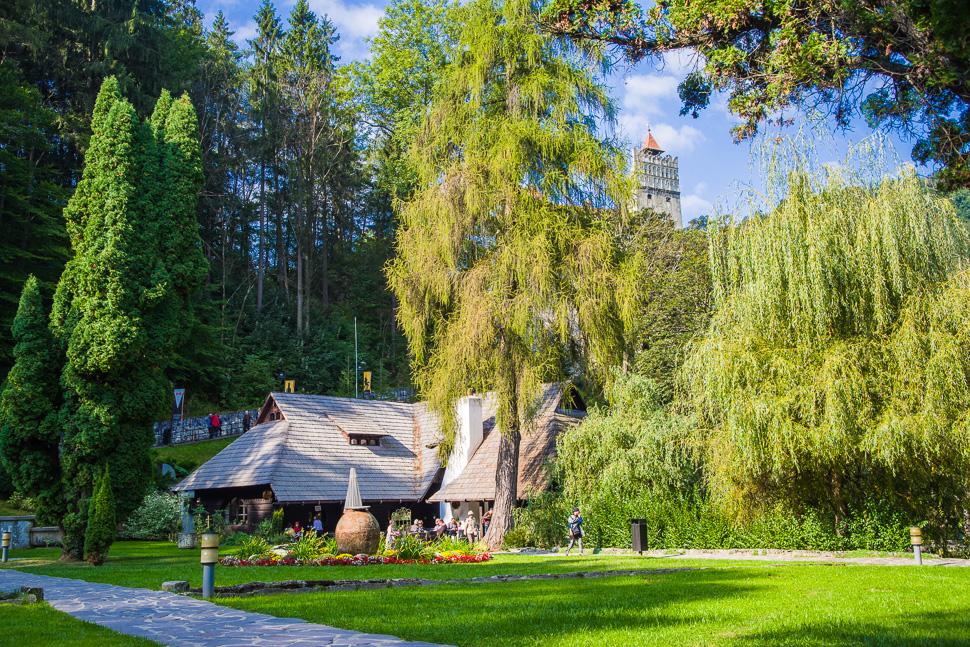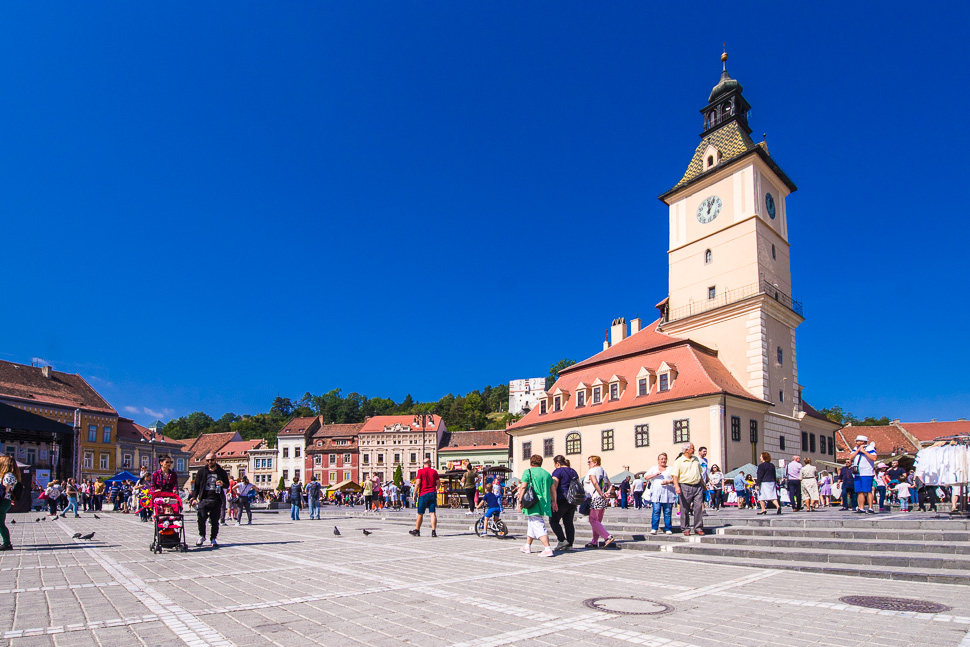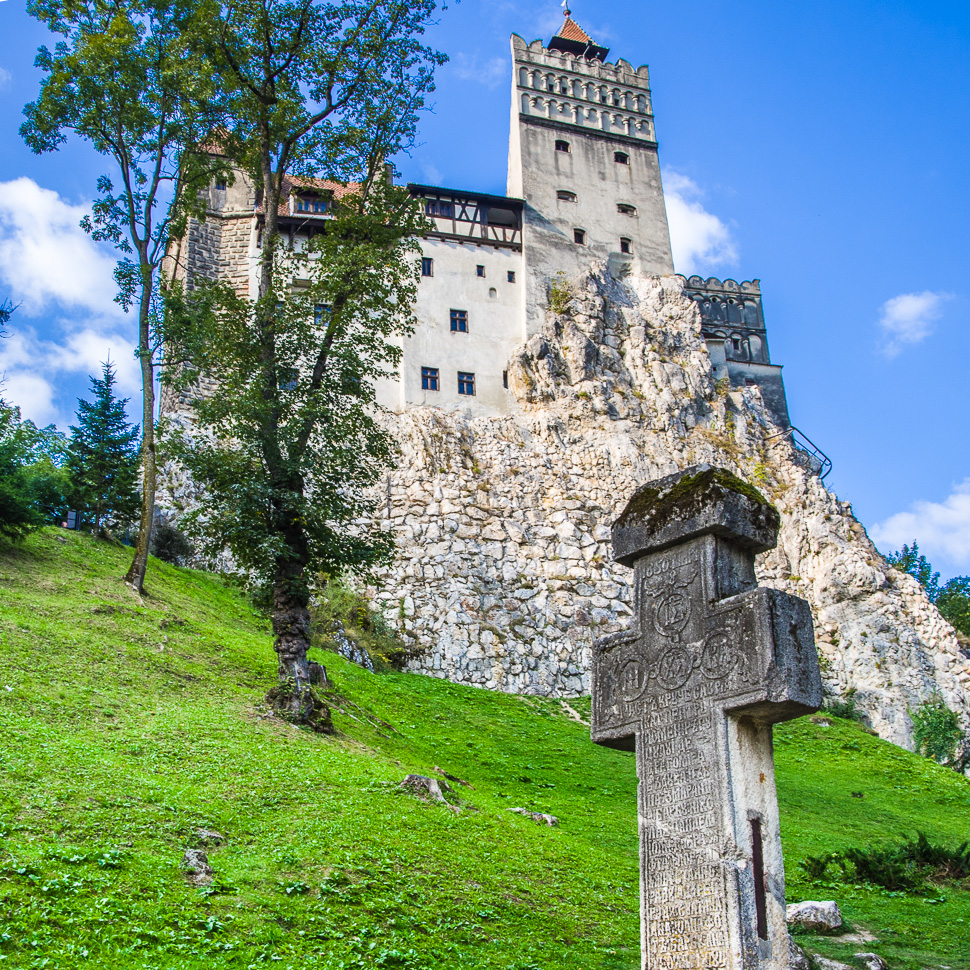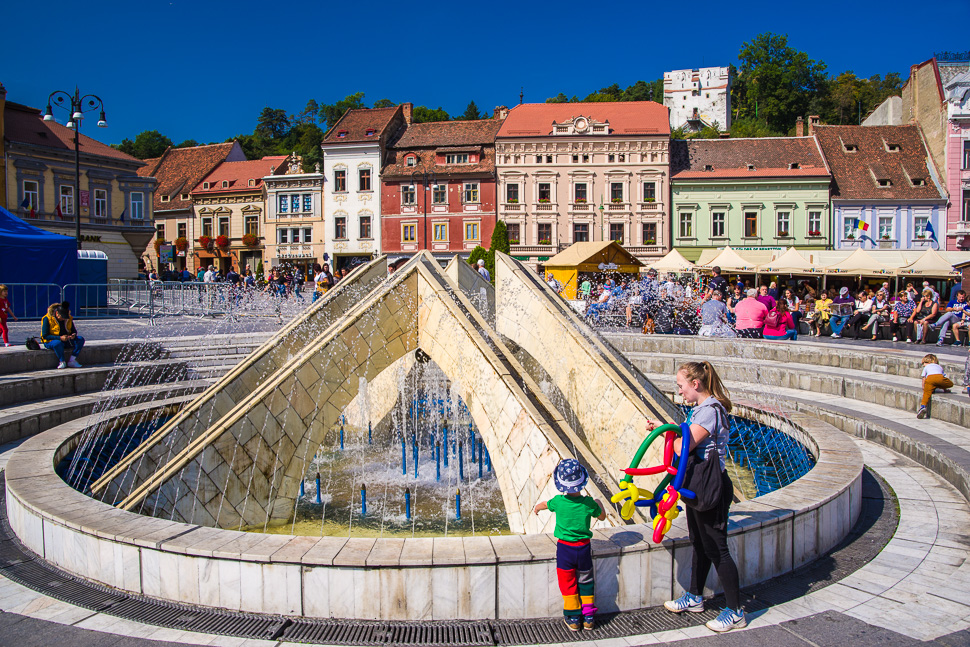You haven’t been to Romania if you haven’t visited the castle of Dracula – or what the legend wants us to believe was the castle of this figure, invented by Bram Stoker.
 |
| Yes, we visited before midnight! |
Bran Castle, or Törzburg in German, is a fortress situated on the Transylvanian side of the historical border with Wallachia.
It is commonly known outside Romania as Dracula’s Castle because it’s often referred to as the home of the title character in Bram Stoker’s Dracula. There is no evidence that Stoker knew anything about this castle, which has only tangential associations with Vlad the Impaler, voivode (military commander) of Wallachia, the inspiration for Dracula.
In 1377 the Saxons of Kronstadt (modern Brașov) received the privilege to build a stone castle on their own expense and labour force. The castle was used in defence against the Ottoman Empire, and later became a customs post on the mountain pass between Transylvania and Wallachia.
After 1920, the castle became a royal residence within the Kingdom of Romania after being donated to the royal house by the Saxons of Kronstadt-Braşov, who had no more use for it and no interest in financing the time-damaged property. It became the favourite home and retreat of Queen Marie, who ordered its extensive renovation. The castle was inherited by her daughter, Princess Ileana, who ran a hospital here in World War II. It was later seized by the communist regime with the expulsion of the royal family in 1948.
In 2005, the Romanian government passed a special law, allowing restitution claims on properties illegally expropriated, and the castle was awarded ownership to American Dominic von Habsburg, the son and heir of Princess Ileana.
 |
| Cosy fireplaces in every room |
 |
| Restaurant in front of the castle |
 |
| Market with typical products of the region |
 |
| Langos with sour cream and cheese – very typical! |
The next stop was at Brasov – Kronstadt in German – where we took a walk through the centre on a Sunday, when the town was full of people enjoying this nice day.
 |
| Main square of Brasov |
 |
| City Gate |
 |
| Historic sport building |
 |
| Black Church |
Our final stop for this day was at Hârman – Honigberg in German – where we visited a beautiful example of a fortified church.
The south-eastern part of Transylvania has one of the highest numbers of fortified churches from the 13th to 16th centuries. More than 150 well-preserved fortified churches, founded by the Transylvanian Saxons still exist, 7 are listed as UNESCO World Heritage Site.
 |
| The fortified church of Honigberg |
 |
| Rooms were built onto the walls of the church, to gain more living space for the villagers |
 |
| Every family of the village had its room inside the walls in case of threat |
 |
| Bird’s Eye View of the church |
 |
| Chapel with paintings from the 15th century |
 |
| Archaic benches |
 |
| Flower of the Day |





































